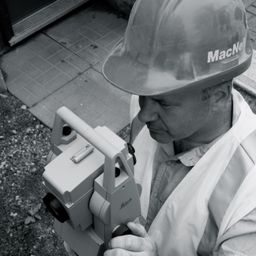The Stabilization of Neighbourhoods as an Accidental Effect of Over-Cladding
My Session Status
Over-cladding with vinyl or aluminum siding is a progressive phenomenon largely dependent on social economic conditions and is every bit as pervasive as an insect infestation or tidal erosion, in both its manifestation and challenge. While conservationists choose to debate the many issues surrounding modern extruded sidings and trims the over-cladding industry is forging ahead with their work orders, historic structure by historic structure. The results are witnessed across the North American continent.
To many property owners over-cladding alterations are an effective operating and maintenance cost control that offers the benefit of a fashionable new modern material. Aluminum and vinyl siding is known to be cost effective in application with an expected durability and life to first maintenance of approximately 30 years. As a mitigation mechanism that does not address the surface fabric directly, overcladding can make a structurally stable building weathertight, enabling continued occupancy of the building that provides security against intruders, thereby initiating stabilization. Viewed as a ‘onetime’ veneer, over-cladding can be the passive component of a temporary protection process for horizontal and vertical exterior surfaces.
Stabilization through over-cladding allows for conservation, interpretation, reconstruction and restoration at a later date by protecting the building’s exterior surfaces. Since many historic neighborhoods were over-clad in the late 1970’s and early 1980’s there exists a current and future historic resource that requires immediate thoughtful consideration as the initial 40-year stabilization effort ends. As conservationists we must now choose between abstention, reconstitution, substitution, circumvention, and acceleration. The over-cladding topic is timely because districts such as the Town of Lunenburg with its UNESCO world heritage site designation must now confront the undisciplined application of over-cladding materials
This paper will focus on the exterior restoration of a structurally stable 1-1/2 storey 1916 balloon framed farmhouse that was over-clad with vinyl siding in the early 1980’s, located in the Regional Municipality of Lunenburg. It is typical of many small buildings that provide background settings for landmark structures and historic districts. The assumption is such rehabilitations can occur without a change in occupancy and the restored building fabric can be maintained with minimal outside funding.
To test economical restoration methods a simple annual methodology for the removal of vinyl siding façade by façade followed by restoration was used over a five-year period. A clear distinction was made between the level of rehabilitation and documentation expected for a structure intended purely for contextual purposes from that which we might apply to a landmark structure. By conducting the repairs over a period of time a natural program of cyclical maintenance was introduced. Through the use of our architectural firm’s industrialized design workshop, mock-ups were made available and used to test our premises.
Topics addressed will include but not be limited to modern and traditional tools and techniques, in situ replacement of missing building elements including window caps, sills, shingles, flashings and decorative ornamentation, lead paint abatement, paint color selection to discriminate from vinyl siding colour palettes, the environmental impacts of vinyl siding, availability of oral history, modern paint durability, the advantage of seasonal changes in wood shingles for restoration and refinishing purposes, material selection including the sustainable forestry practices, and equipment and techniques used throughout the project. For presentation purposes attention will be given to window restoration. Typically in over-cladding projects the original windows are left in place and receive no further maintenance. All too often conservationists view over-cladding as the destruction of the resource. This paper will demonstrate that over-cladding can instead be viewed as the beginning of a conservation process.
